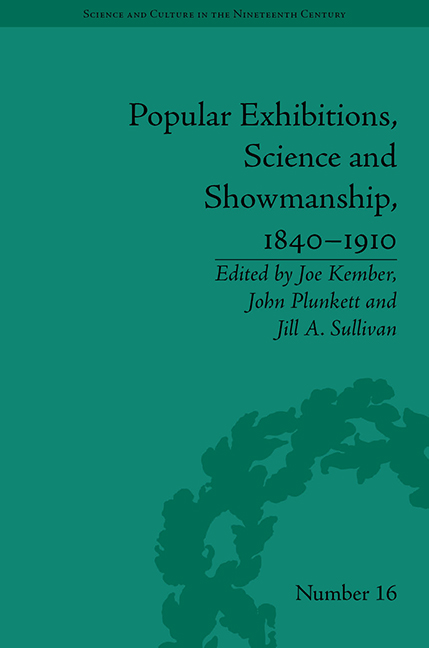Book contents
- Frontmatter
- CONTENTS
- Acknowledgements
- List of Contributors
- List of Figures and Tables
- Introduction
- Part I Science and Spectacle
- Part II Word and Image
- Part III Staging Knowledge
- 7 The Talking Fish: Performance and Delusion in the Victorian Exhibition
- 8 Representation, Race and the Zoological Real in the Great Gorilla Controversy of 1861
- 9 On Wonder: Situating the Spectacle in Spiritualism and Performance Magic
- Part IV The Politics of Display
- Notes
- Index
8 - Representation, Race and the Zoological Real in the Great Gorilla Controversy of 1861
from Part III - Staging Knowledge
- Frontmatter
- CONTENTS
- Acknowledgements
- List of Contributors
- List of Figures and Tables
- Introduction
- Part I Science and Spectacle
- Part II Word and Image
- Part III Staging Knowledge
- 7 The Talking Fish: Performance and Delusion in the Victorian Exhibition
- 8 Representation, Race and the Zoological Real in the Great Gorilla Controversy of 1861
- 9 On Wonder: Situating the Spectacle in Spiritualism and Performance Magic
- Part IV The Politics of Display
- Notes
- Index
Summary
Representations of gorillas have long existed in a tense situation between myth and mimesis. Sharing 97.7 per cent of their genes with Homo sapiens, they are among the closest of humanity's animal relations and have often stimulated uneasy and politically-charged reflections on human origins and identity, particularly along the intersection of issues of species and race. What became known in the 1940s as primatology tells us as much about human ideologies as it does about the animals in question, comprising what Donna Haraway terms simian orientalism: the ‘construction of the self from the raw material of the other’. With the development of animal studies over recent years as a critical practice concerned with rethinking the involvement of animals in human cultures, such anthropomorphic tendencies have received notable attention. Jacques Derrida's late work on animals has proved especially influential. His coinage ‘fabulation’ reads humanizing representations as a discourse of power over animals that constitutes a ‘taming, a moralizing subjection, a domestication’. Consequently, an ethical imperative has emerged, in the words of the conclusion to Erica Fudge's Animal, that ‘We should think about animals as animals’, recognizing in doing so their existence beyond human symbolic economies.
Given their unavoidable relationship with humans, thinking about gorillas as gorillas is a vexed enterprise. These endangered African mammals are as ambiguous as they are charismatic; hard to locate in their forest habitats and for centuries appearing only at the margins of science.
- Type
- Chapter
- Information
- Popular Exhibitions, Science and Showmanship, 1840–1910 , pp. 153 - 166Publisher: Pickering & ChattoFirst published in: 2014



